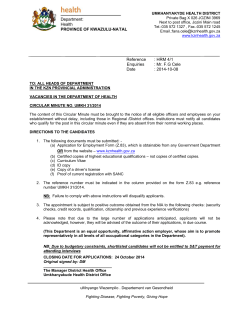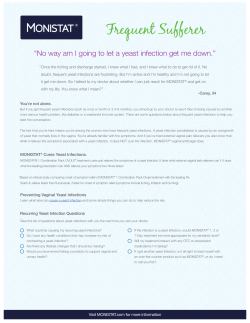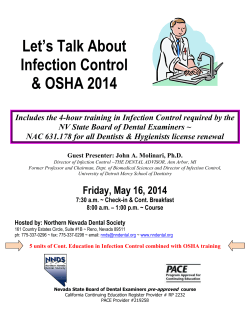
Pat Walker
Treatment Treatment varies according to which organism is causing the infection. It is important to have an exam to identify the cause and receive appropriate treatment. Bacterial vaginosis Prescription medication is usually used to treat or cure BV. Trichomoniasis Curable with prescription antibiotics. Sexual partners must also be treated. Yeast Prescription or over the counter medication may be used. Did you know? Some yeast medicines make latex condoms and diaphragms weak and more likely to break. If you use a condom or diaphragm, ask your pharmacist or health care provider which medicine you should use. Mission Statement The Pat Walker Health Center, University Health Services provides professional and comprehensive medical care, mental health care, health education, and health promotion for a diverse community of students, faculty, and staff. We, the University Health Services Staff of the Pat Walker Health Center, have a commitment to physical, mental, spiritual, social, and emotional health, the highest standards of quality, and appreciation of the value of each individual. Through these endeavors we support the educational mission of the University of Arkansas and the growth of each individual. Pat Walker Health Center Vaginitis Pat Walker Health Center University Health Services 525 N. Garland Avenue Fayetteville, AR 72701 place title here (479) 575-4451 TTY (479) 575-4124 Website: health.uark.edu Accredited by Accreditation Association for Ambulatory Health Care A Member of the Division of Student Affairs Pat Walker Health Center University Health Services 525 N. Garland Avenue Fayetteville, AR 72701 (479) 575-4451 TTY (479) 575-4124 Website: health.uark.edu Last updated 04/10 Vaginitis is a name for swelling, itching, burning or infection of the vagina that can be caused by several different germs. Bacterial vaginosis, (BV), a bacterial infection and yeast, a fungal infection, are the two most common forms of vaginitis. Trichomoniasis (“trich” pronounced trick) is also a vaginitis. Trichomoniasis is caused by a parasite protozoa called Trichomonas vaginalis. The vagina has several normal organisms. When the normal environment is altered (chemically or mechanically) vaginitis is more likely to occur. Many of our personal habits contribute to irritation. Regular bathing is all that is necessary for good hygiene. Douches, soaps, “feminine” products and over-the-counter treatments for itching may aggravate the delicate tissue and allow organisms to overgrow or cause symptoms to persist. It is important to realize that underlying problems such as gonorrhea, chlamydia, genital warts, immune system disorders, or diabetes may be altering the normal vaginal environment. How To Decrease the Risk of Recurrent Vaginitis: • Limit tight or restrictive clothes, including: nylon underwear, tight jeans, pantyhose, wet swimsuits or spandex cycling shorts. • Don’t share towels or intimate articles of clothing, swimsuits, etc. • Avoid colored or scented toilet paper and panty liners. Make sure clothes are rinsed well when washed; avoid heavily scented detergents or fabric softener. • Clinicians disagree on whether all vaginal infections are sexually transmitted. Trichomoniasis certainly is. Often the clinician will take an individual approach on treating the sex partner. • Do not douche. • Use medication as directed and finish it. Failure to use properly can delay recovery or make it ineffective. • Limit sexual partners; use condoms; use a water-based lubricant. • Get an annual exam with a Pap smear and infection screen if you have had a different sexual partner since your last exam. Diagnosis Often the accurate diagnosis can be made by inspecting the area and looking at a sample of discharge under the microscope. A test for gonorrhea and chlamydia may assist in detecting an additional cervical infection. It is best to have an examination to avoid misdiagnosis. Selftreatment may clear symptoms, but professional evaluation is indicated if symptoms are not relieved or return.
© Copyright 2025





















